40 Quadrilaterals
Quadrilaterals are polygons with four sides.
Vocabulary: Click on the words below for their definitions
The Types of Quadrilaterals with Equal Sides
 Square
Square
- Four equal sides or edges
- Four equal angles
If the shape has four equal sides and four equal angles, it’s a square.
The direction of the shape below has several names:
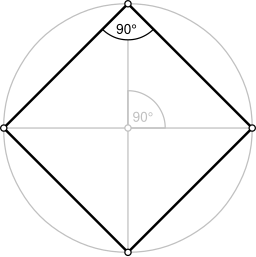

- Square on point
- Square on tip
- Diamond shape
- Skewed square
Watch how a skewed square is drawn inside a circle. The square is inscribed in the circle.
Rhombus
- Four equal sides or edges
- Two pair of equal angles (opposite angles are equivalent)


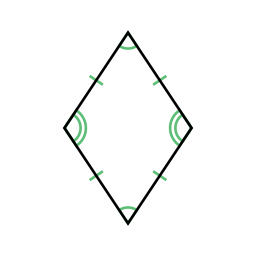

The plural for rhombus is rhombi because it is originally a Greek word.
Your Turn
Types of Quadrilaterals with Two Pairs of Equal Sides
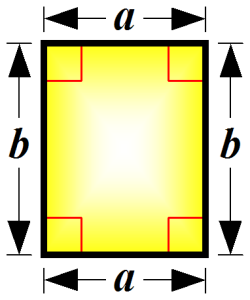
Rectangles
- Two pair of equal sides
- All four sides are not equal.
Opposite sides are equal.
- All four sides are not equal.
- Two pair of equal angles
Look how a square shape compares to rectangles and rhombi.
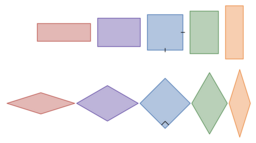
The square is the center shape in both lines.
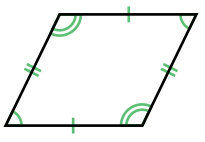
Parallelograms
- Two pair of equal sides. Again, opposite sides are equal.
- Two pair of equal angles or vertices

Kites, Darts or Deltoids
- Two pair of equal sides that are next to or adjacent to one another.
- Two pair of equal angles or vertices
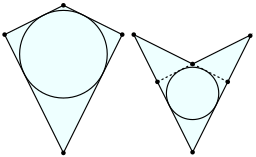
The shape on the left is a kite.
Notice that the tip on the top points out.
This is called a convex surface.
The shape on the right is called a dart or a deltoid.
Notice the tip on the top points inside.
This is called a concave surface.
Watch this 2:00 video, Convex and Concave Quadrilaterals by MooMooMath and Science, July 17, 2020.
The two lines that are equal are not opposite to each other. The lines are next to each other. They are called adjacent lines. Adjacent means next to or beside. The top lines that push out and up or in and down are equal adjacent lines. These lines share a point where they go in opposite directions. This point is the vertex.
The longer lower two lines that form a “V” are also equal adjacent lines. The lines share the bottom point which is their vertex.
Watch this 6:20 video, Kites in Geometry | Definition and Properties by Tutors, Feb. 11, 2024.
Your Turn
Types of Quadrilaterals with One Pair of Parallel Lines
Trapezoid
- One pair of parallel lines
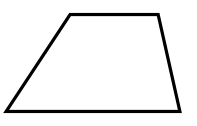


Trapezoids can also be identified by their angles.
Your Turn
Quadrilaterals that are Irregulars
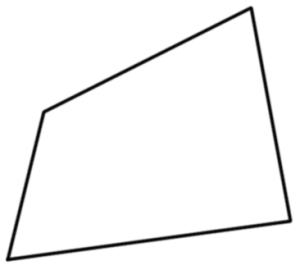
Your Turn
A Chart about Quadrilaterals
In the left column and the top row, the trapezoids are identified by the size of the inside (interior) angles. Each of these trapezoids have only one pair of parallel sides/edges.
The remaining four shapes–square, rectangle, parallelogram, and rhombus–are in another group because they each have two pair of parallel sides/edges.
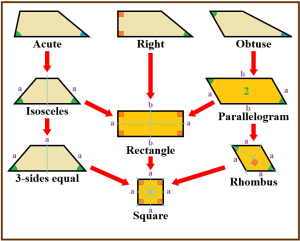
Watch this 2:38 video about Types of Quadrilaterals and their Properties by MooMooMath and Science, June 1, 2020.
Watch this 2:10 video about What is a Quadrilateral?–Geometric Shapes–Geometry by Socartica, Dec. 21, 2013.
Summary:
- Identify different types of quadrilaterals


